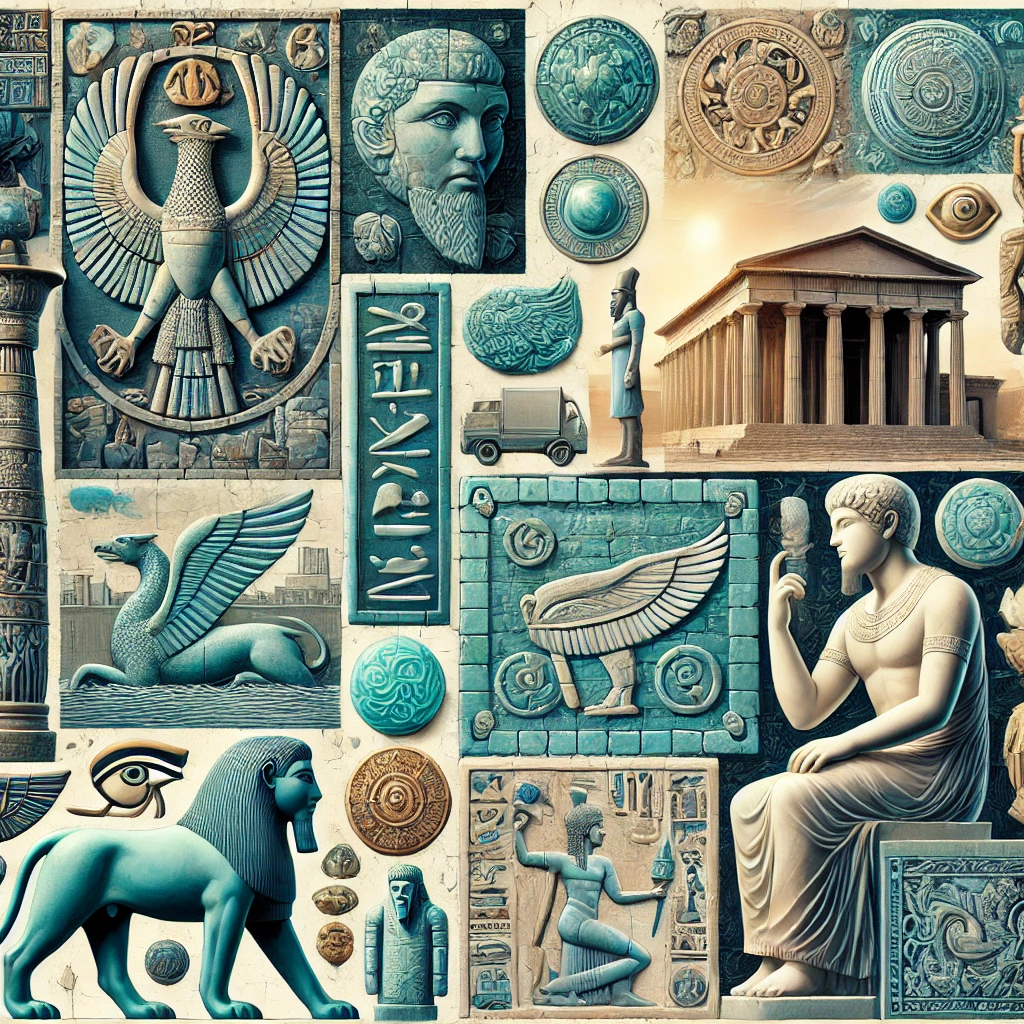
Ancient Artz: A Journey Through Time
Ancient art has been a vital part of human civilization, reflecting the beliefs, cultures, and lifestyles of people who lived thousands of years ago. In the modern era, “Ancient Artz” captures a comprehensive look at the legacy of ancient art from various regions of the world. The term “Ancient Artz” encompasses artistic expressions in painting, sculpture, architecture, and more, offering insights into the rich cultural and historical backgrounds of ancient civilizations. In this article, we will dive deep into the significance of ancient art, its characteristics, and its long-lasting impact on contemporary culture.
What is Ancient Artz?
“Ancient Artz” refers to the visual arts produced by the earliest civilizations of the world, including the Mesopotamians, Egyptians, Greeks, Romans, Chinese, Indians, and others. It also includes art forms from prehistoric times, such as cave paintings and early sculptures. Ancient art was primarily used for religious, ceremonial, and political purposes. It represented the values, beliefs, and social structures of the time.
In the modern context, “Ancient Artz” symbolizes a broader appreciation for these age-old traditions. Scholars, artists, and collectors today are drawn to these timeless works due to their historical relevance and aesthetic beauty. By understanding ancient art, we gain insights into the evolution of human thought and creativity.
The Origins of Ancient Artz
The origins of ancient art can be traced back to prehistoric times, where early humans expressed themselves through drawings on cave walls and carvings on stones. These early works of art were simplistic yet profound, often depicting animals, human figures, and natural landscapes. One of the most famous examples of prehistoric art is the Lascaux Cave paintings in France, which date back over 17,000 years.
As civilizations developed, art became more sophisticated and symbolic. Ancient cultures used art to record their history, convey religious beliefs, and honor their gods. Artifacts like pottery, jewelry, and sculptures give us a window into how these early societies functioned.
Key Civilizations and Their Contributions to Ancient Artz
1. Mesopotamian Art
Mesopotamia, often referred to as the “cradle of civilization,” is one of the earliest known regions to develop complex art forms. Mesopotamian art is characterized by its intricate carvings, statues, and reliefs that depicted their gods, rulers, and military exploits. Art in this region was closely linked to religion, and much of it was created for temples or palaces.
One of the most famous pieces of Mesopotamian art is the Ishtar Gate, a grand entrance to the city of Babylon. The gate was adorned with glazed brickwork, depicting lions, dragons, and bulls, symbolizing the power and divinity of the Babylonian king.
2. Ancient Egyptian Art
Egyptian art is iconic and immediately recognizable. The art from ancient Egypt was primarily religious, focusing on the afterlife and the deities worshiped by the Egyptians. Egyptian artists depicted gods, pharaohs, and the deceased in an idealized form, showcasing their eternal nature. The use of hieroglyphics and symbolic color palettes further enhanced the mystical elements of their art.
Some of the most well-known ancient Egyptian art includes the Great Sphinx of Giza, Tutankhamun’s burial mask, and the numerous wall paintings found in tombs and temples. These works not only demonstrate incredible artistic skill but also provide insight into the religious and social hierarchies of ancient Egypt.
3. Greek and Roman Art
The ancient Greeks and Romans made significant contributions to art, particularly in sculpture and architecture. Greek art emphasized balance, proportion, and beauty, focusing on the ideal human form. Classical Greek sculptures, such as the Venus de Milo and Discobolus (the Discus Thrower), exemplify the Greek pursuit of perfection in human anatomy.
The Romans, inspired by the Greeks, continued this tradition, but they also introduced new techniques and materials such as concrete, which enabled the construction of monumental structures like the Colosseum and the Pantheon. Roman art was more focused on realism, and they excelled in creating detailed portraits and sculptures of their emperors and important figures.
4. Indian Art
Ancient Indian art is deeply intertwined with religion, especially Hinduism, Buddhism, and Jainism. Temples, sculptures, and paintings from ancient India reflect the spiritual beliefs of the time. Early examples include the Indus Valley Civilization’s seals and statues, as well as the intricate carvings of the Ajanta Caves and the Sanchi Stupa.
Indian art also saw the development of intricate sculptures, such as the Dancing Shiva (Nataraja), which symbolizes the cosmic dance of creation and destruction. These works were often created to honor the gods and serve as a means for worshippers to connect with the divine.
5. Chinese Art
Chinese art has a long history that stretches back over 5,000 years. Early Chinese art was heavily influenced by philosophy and religion, especially Confucianism, Taoism, and Buddhism. Ancient Chinese artists excelled in creating fine pottery, jade carvings, and bronze works, with many pieces showcasing dragons, phoenixes, and other mythological creatures.
One of the most significant contributions of ancient Chinese art is calligraphy, an art form that combines writing with aesthetic expression. In addition to this, the famous Terracotta Army of Emperor Qin Shi Huang is a remarkable example of the artistry and craftsmanship of ancient Chinese sculptors.
The Common Themes of Ancient Artz
While ancient art from different civilizations varies greatly in style and technique, several common themes and purposes emerge across these works.
1. Religious and Spiritual Symbolism
A central theme in ancient art is the depiction of religious beliefs and practices. Whether it is the gods of Egypt, the mythological creatures of Greece, or the spiritual symbolism in Indian art, ancient artists often used their work to express their connection to the divine.
Temples, statues of deities, and ceremonial objects were common artistic expressions used for worship and rituals. These pieces were not only artistic masterpieces but also tools for religious devotion and spiritual reflection.
2. Depictions of Power and Authority
Many ancient works of art were commissioned by rulers or elites to demonstrate their power and status. Egyptian pharaohs, Mesopotamian kings, and Roman emperors all used art to assert their authority. Monumental structures, such as pyramids, palaces, and statues, were often designed to immortalize these leaders and to remind future generations of their greatness.
3. Nature and the Human Experience
Ancient artists were also fascinated by the world around them. They depicted the beauty of nature, human struggles, and daily life. For instance, early cave paintings show the importance of hunting and the relationship between humans and animals. Ancient Greek art celebrated the human form, reflecting the belief that humans were a central part of the universe.
Techniques and Materials Used in Ancient Artz
Ancient artists used a variety of materials, including stone, clay, metal, and paint. Different civilizations preferred specific materials, depending on their availability and the cultural significance.
1. Sculpture
Sculpture was a dominant form of artistic expression in ancient cultures. The Greeks and Romans are well known for their marble statues, while ancient Egyptians created statues out of stone and metal. Chinese sculptors often used jade, bronze, and terracotta, crafting delicate yet powerful works.
2. Painting
Painting, both on walls and other surfaces, was another popular form of art. Egyptian tomb paintings were highly stylized, often depicting scenes from the afterlife. In ancient Rome, frescoes were used to decorate homes and public spaces, often showcasing mythological stories or everyday scenes.
3. Architecture
Architecture, while practical, was also a form of artistic expression in ancient times. The pyramids of Egypt, the Parthenon in Greece, and the Great Wall of China are examples of how architecture served both a functional and aesthetic purpose.
The Legacy of Ancient Artz
The influence of ancient art is still evident in the modern world. Many contemporary artists draw inspiration from ancient styles, techniques, and themes. Museums worldwide feature vast collections of ancient art, and these works continue to captivate audiences, inspiring new generations of artists and scholars.
Ancient art also plays a critical role in preserving the history and culture of ancient civilizations. Through the study of ancient art, historians can piece together aspects of societies that would otherwise be lost to time.
Conclusion
“Ancient Artz” offers a glimpse into the creativity and innovation of the world’s earliest civilizations. From the intricate carvings of Mesopotamia to the awe-inspiring sculptures of Greece, ancient art is a testament to humanity’s desire to create, express, and connect with the divine. These timeless works continue to inspire and influence modern culture, reminding us of the rich cultural heritage that has shaped the world we live in today.
Understanding and appreciating ancient art is not only an exploration of artistic mastery but also a journey through the history and values of the people who came before us. As we continue to study and celebrate these masterpieces, the legacy of “Ancient Artz” will live on for generations to come.






